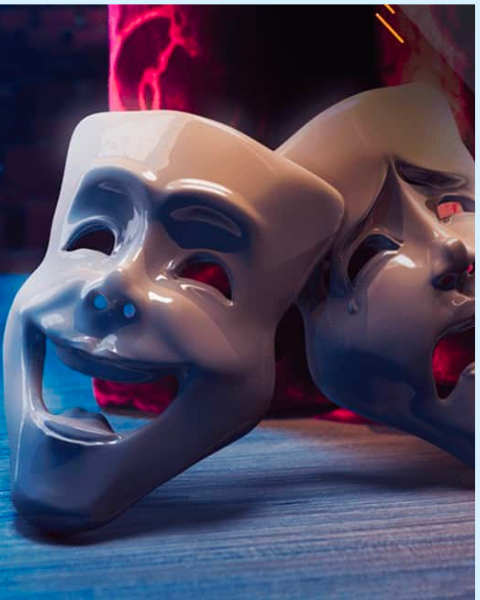Andrew Tate Net Worth: How Much Money Does Andrew Tate Have?
September 27, 2023
Online Film School VS. Traditional Film School: Which One is Better?
October 20, 2023

Understanding the various camera shot types is an essential step in your journey towards becoming a proficient filmmaker.
In this blog, we will delve into the world of filmmaking shots, helping you grasp the basics and explore the different camera shot types.
Whether you’re enrolled in one of the top filmmaking institutes in India or considering filmmaking colleges in Mumbai, India, this knowledge will be invaluable to your craft.
The Language of Filmmaking: Camera Shot Types
-
The Wide Shot (WS) or Establishing Shot
Let’s start with the wide shot, often referred to as the establishing shot. This shot type is used to set the scene, provide context, and establish the location for the audience. In filmmaking institutes in India, instructors emphasize the importance of the wide shot in introducing viewers to the film’s world.
-
Medium Shot (MS)
The medium shot brings the audience closer to the characters while still showing their surroundings. It’s ideal for conveying interactions and emotions among the characters. As you explore camera shots in filmmaking colleges in Mumbai, India, you’ll discover that the medium shot is frequently used to create a more intimate connection with the characters.
-
Close-Up (CU)
If you want to emphasize a character’s emotions, details, or objects of significance, the close-up shot is your go-to choice. It captures a small portion of the subject, allowing the audience to focus on specific details, such as facial expressions or key objects.
-
Extreme Close-Up (ECU)
As you advance in your understanding of filmmaking shots, you’ll come across the extreme close-up. This shot type zeroes in on a subject’s minute details, often capturing just the eyes, lips, or a specific object. It can be incredibly powerful for conveying intense emotions or highlighting important plot elements.
-
Over-the-Shoulder Shot (OTS)
The over-the-shoulder shot is frequently used in dialogue scenes to show the perspective of one character while capturing the character they are conversing with. It adds depth to conversations and helps the audience connect with both characters.
-
Two-Shot
When you want to highlight the dynamic between two characters, the two-shot is your best choice. This shot type frames both characters in the same shot, emphasizing their relationship and interactions.
-
Dutch Angle Shot
For a sense of disorientation or to convey a character’s psychological turmoil, the Dutch camera shots filmmaking is employed. It tilts the camera, creating an off-kilter, unsettling effect.
-
Low Angle Shot
The low angle shot is used to make a character or object appear more powerful or imposing. It’s achieved by shooting from a position lower than the subject, looking upward.
-
High Angle Shot
Conversely, the high angle shot makes a character or object appear smaller and less significant. It’s shot from an elevated position, looking down on the subject.
-
Tracking Shot
To add movement and fluidity to your scenes, consider using a tracking shot. It involves moving the camera alongside the subject, either on a dolly or handheld, creating a dynamic visual experience.
-
Steadicam Shot
The Steadicam shot is known for its smooth and stable movement. It allows the camera operator to move freely while maintaining a steady shot, making it a favorite among filmmakers for tracking shots.
-
Crane Shot
For dramatic, sweeping shots that cover vast areas or showcase grand environments, the crane shot is indispensable. It involves mounting the camera on a crane or jib to achieve breathtaking angles and perspectives.
-
Zoom Shot
While technically not a camera movement, the zoom filmmaking shot allows you to change the focal length of the lens, effectively “zooming in” or “zooming out” on a subject. It’s a versatile tool for directing the audience’s attention.
Integrating Camera Shot Types into Your Filmmaking Journey
Understanding and mastering these camera shot types is crucial for any aspiring filmmaker. Whether you’re studying at one of the top filmmaking institutes in India or considering filmmaking colleges in Mumbai, India, you’ll find that a solid grasp of shot composition and storytelling through visuals is invaluable.
Experiment with these camera shot types in your projects, and pay attention to how they affect the audience’s perception and engagement. The choice of shot can convey emotions, build tension, and shape the narrative in profound ways.
If you’re considering pursuing a career in filmmaking and are looking for top-tier filmmaking institutes in India, Whistling Woods International (WWI) should be on your radar. Located in the vibrant film industry hub of Mumbai, Whistling Woods International offers a range of comprehensive courses designed to nurture your passion for filmmaking and screenwriting.
Courses offered by WWI:
- BSc in Filmmaking | (3 Years)
- Diploma in Screenwriting | (1 Year)
- MA in Screenwriting | (2 Years)
- MA in Filmmaking with Specialisations | (2 Years)
You can check out their website for information about other courses they offer.



